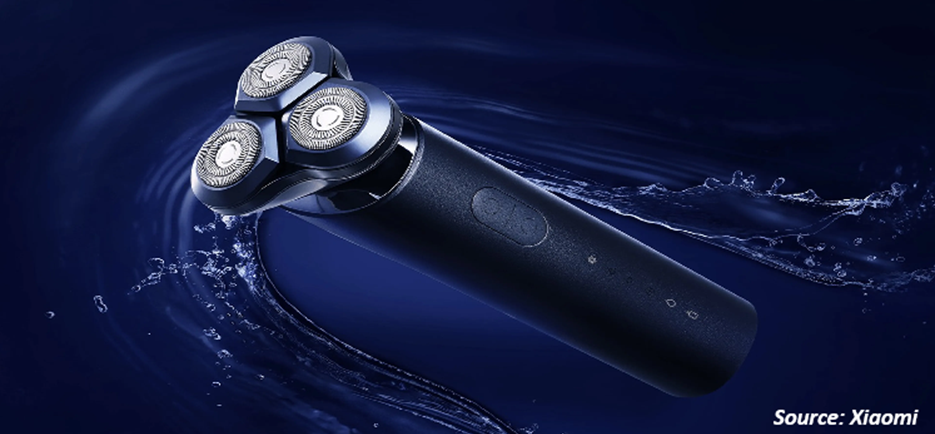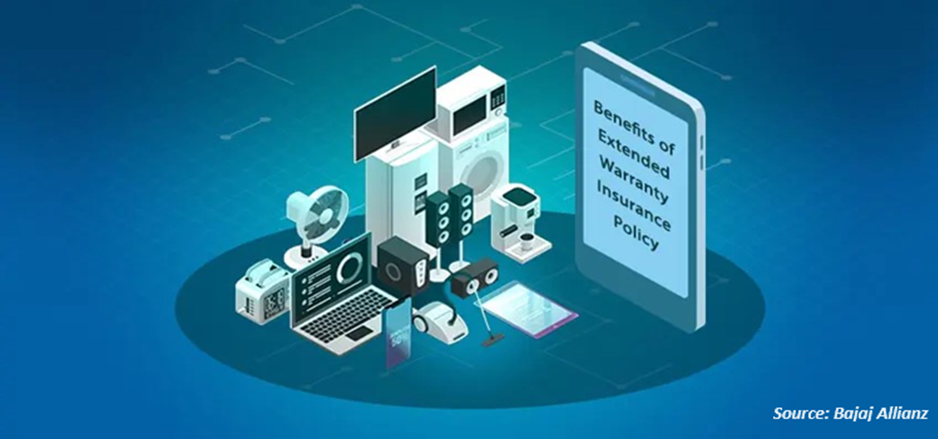
Smart Water Purifier Market by Connectivity (Wi-Fi and Bluetooth), by Technology (Ultra-Filtration (UF), Ultraviolet (UV), Reverse Osmosis, Multi-stage purifiers, and Others), by End User (Residential, Commercial, and Industrial), and by Distribution Channel (Retail Store, Direct Sales, and Online)- Global Opportunity Analysis and Industry Forecast 2024-2030
Industry: Retail and Consumer | Publish Date: 25-Oct-2024 | No of Pages: N/A | No. of Tables: N/A | No. of Figures: N/A | Format: PDF | Report Code : RC2416
Smart Water Purifier Market Overview
The global Smart Water Purifier Market size was valued at USD 2.73 billion in 2023 and is predicted to reach USD 4.11 billion by 2030 with a CAGR of 6.0% from 2024-2030. The smart water purifier market also known as smart water purification device market refers to the industry that provide advanced water purification systems equipped with intelligent features such as real-time monitoring, remote control, and automatic maintenance alerts. These smart water purification systems leverage advanced technologies including internet of things (IoT) sensor and data analytics to ensure optimal water quality, efficient operation, and regular maintenance. Businesses including commercial establishments, industrial facilities, and service providers adopt these solutions to enhance water safety, reduce operational costs, and improved consumer satisfaction by providing high-quality purified water.
Market Dynamics and Trends
The surge in the spread of waterborne disease worldwide due to the consumption of polluted water necessities the demand for reliable water purification solutions, thereby boosting the market growth. The latest report of the World Health Organization reveals that, around 1.7 billion people consumed contaminated drinking water source with faeces in 2022. Smart purifiers offer advanced filtration that efficiently extract harmful bacteria, viruses, and other contaminants from the drinking water. This growing health consciousness related to waterborne disease is propelling the demand for smart water purifiers.
Furthermore, the surge in technological advancement including integration of artificial intelligence (AI), IoT, and other advanced technologies in water purifiers are further boosting the market growth. These innovations provide advanced features to water purifiers such as automatic alerts for filter change and real time monitoring of water quality, enhancing the performance of the purifier.
Moreover, the rising clean water crisis across many regions due to pollution, overuse and inadequate infrastructure is significantly fueling the smart water purifier market growth. According to Unicef, around two third population, 4 billion people experience serious water scarcity for at least one month each year. Also, it is estimated that around half of world’s population could be living in areas facing water crisis by 2025. Smart water purifiers provide comprehensive solutions to such issues by effectively purifying water, eliminating contaminants and make the water consumable. Thus, the rising water scarcity in multiple regions is further rising the need to efficient water purifying solutions including smart water purifiers.
However, the high cost associated with the technology of smart water purifiers is restraining the growth of the market as these purifiers are more expensive than traditional water purifiers due to their advanced filtration systems and sensors. On the other hand, the introduction of automated water monitoring coupled with advanced filtration are the factors expected to create ample growth opportunities for the market in the future.
Market Segmentation and Scope of Study
The smart water purifier market report is segmented on the basis of connectivity, technology, end user, distribution channel, and region. Based on connectivity, the market is classified into Wi-Fi and Bluetooth. Based on the technology, the market is segmented into Ultra-Filtration (UF), Ultraviolet (UV), reverse osmosis, multi-stage purifiers, and others. On the basis of end user, the market is categorized into residential, commercial, and industrial. On the basis of distribution channel, the market is divided into retail store, direct sales, and online. Geographical breakdown and analysis of each of the aforesaid classifications include regions comprising of North America, Europe, Asia-Pacific, and RoW.
Geographical Analysis
Asia-Pacific dominates the global smart water purifier market share and is potently expected to remain dominant in the market throughout the forecast period. This is attributed to the rising water scarcity and contamination across the region, where the access to consumable water is very limited. As per the Food and Agriculture Organization of the United Nations 2023 report, in Asia and the Pacific, around third-quarters of the region’s water is not consumable, with more than 90 percent of the region’s population already facing an imminent water crisis. These situation increases the demand for reliable water filtration solutions including smart water purifiers to improve the inadequate water quality.
Also, the rising number of waterborne diseases in various countries of the region highlights the need for effective water purification solutions, which in turn drives the growth of the smart water purifier market demand. According to Unicef, in South Asia over 134 million people still do not have access to consumable water. Additionally, it is estimated that in South Asia between 68 to 84 percent of water sources are contaminated. This rising need to contain diseases related to the consumption of polluted water boosts the demand for smart water purifiers, as these purifiers offers advanced water purification and filtration solution.
On the other hand, North America shows substantial growth in the market owing to the health and wellness trend in countries such as the U.S. and Canada. As consumers become more aware about the importance of clean and safe consumable water, the demand for smart water purification increases significantly. According to the United States Environment Protection Agency, the U.S. have one of the world's most reliable and safest supplies of drinking water, and around 150,000 public water systems provide drinking water to most Americans. Thus, the growing focus on preventive health measures and the desire for convenience and reliability for safe water are propelling the adoption of advanced water purification systems.
Also, stringent government regulation in countries including the U.S. and Canada regarding water quality and safety are significantly boosting the demand for advanced water purification technologies. For instance, the Safe Drinking Water Act (SDWA), was passed by Congress in the U.S. to protect drinking water in the country. The SDWA sets the standard for drinking water quality and monitor states, local authorities, and water suppliers who enforce those standards. As part of the SDWA, EPA set maximum contaminant levels, along with treatment requirements for around 90 different contaminants in public drinking water. These initiatives support for upgrading water systems, encouraging the use of innovative technologies that ensure compliance with safety standard and provide high-quality drinking water.
Competitive Landscape
The smart water purifier industry includes several market players such as Xiaomi Corporation, VLND, Aquasure, Red Dot, Amway, VIOMI, Shanghai Chunmi Electronics Technology, Panasonic Corporation, Hitachi Ltd, Kent RO Systems Ltd and others. These market players are adopting various strategies such as innovation and collaboration to maintain their dominance in the industry.
For instance, in January 2022, Viomi launched IoT home range including smart water purifier, featuring advanced filtration technology and smart home integration. This water purifier includes 1200G high-volume featuring double RO filters along with mobile application pop-up notification with operating status information and user reminders.
Key Benefits
-
The report provides quantitative analysis and estimations of the from 2024 to 2030, which assists in identifying the prevailing market opportunities.
-
The study comprises a deep-dive analysis of the current and future smart water purifier market trends to depict prevalent investment pockets in the market.
-
Information related to key drivers, restraints, and opportunities and their impact on the is provided in the report.
-
Competitive analysis of the key players, along with their market share is provided in the report.
-
SWOT analysis and Porters Five Forces model is elaborated in the study.
-
Value chain analysis in the market study provides a clear picture of roles of stakeholders.
Smart Water Purifier Market Key Segments
By Connectivity
-
Wi-Fi
-
Bluetooth
By Technology
-
Ultra-Filtration (UF)
-
Ultraviolet (UV)
-
Reverse Osmosis
-
Multi-stage purifiers
-
Others
By End User
-
Residential
-
Commercial
-
Industrial
By Distribution Channel
-
Retail Store
-
Direct Sales
-
Online
By Region
-
North America
-
U.S
-
Canada
-
Mexico
-
-
Europe
-
UK
-
Germany
-
France
-
Italy
-
Spain
-
Denmark
-
Netherlands
-
Finland
-
Sweden
-
Norway
-
Russia
-
Rest of Europe
-
-
Asia-Pacific
-
China
-
Japan
-
India
-
South Korea
-
Australia
-
Indonesia
-
Singapore
-
Taiwan
-
Thailand
-
Rest of Asia-Pacific
-
-
Rest of the World (RoW)
-
Latin America
-
Middle East
-
Africa
-
REPORT SCOPE AND SEGMENTATION:
|
Parameters |
Details |
|
Market Size in 2023 |
USD 2.73 Billion |
|
Revenue Forecast in 2030 |
USD 4.11 Billion |
|
Revenue Growth Rate |
CAGR of 6.0% from 2024 to 2030 |
|
Analysis Period |
2023–2030 |
|
Base Year Considered |
2023 |
|
Forecast Period |
2024–2030 |
|
Market Size Estimation |
Billion (USD) |
|
Growth Factors |
|
|
Countries Covered |
28 |
|
Companies Profiled |
10 |
|
Market Share |
Available for 10 companies |
|
Customization Scope |
Free customization (equivalent up to 80 working hours of analysts) after purchase. Addition or alteration to country, regional, and segment scope. |
|
Pricing and Purchase Options |
Avail customized purchase options to meet your exact research needs. |
KEY PLAYERS
-
Xiaomi Corporation
-
VLND
-
Aquasure
-
Red Dot
-
Amway
-
VIOMI
-
Shanghai Chunmi Electronics Technology.
-
Panasonic Corporation
-
Hitachi Ltd.
-
Kent RO System Ltd.




 Speak to Our Analyst
Speak to Our Analyst


































